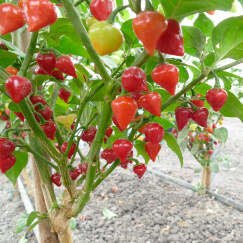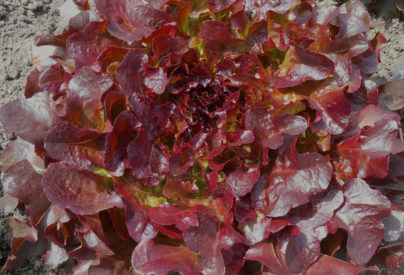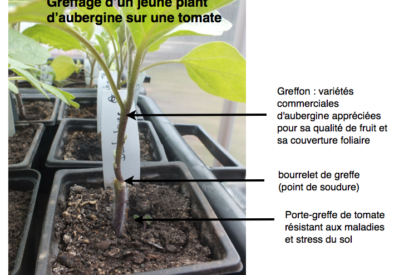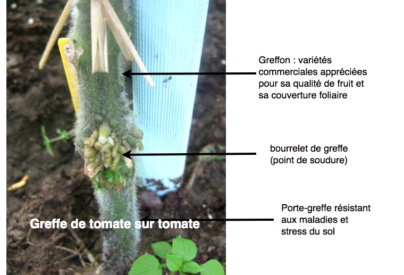


Our products
Are you interested?
Find the nearest
dealer



Our products
Are you interested?
Find the nearest
dealer

Our activity can sometimes be complex to understand in the slightest details. This page aims to popularize some points of our activity.
How are our seeds packaged?
To preserve the quality of our seeds all along their shipping, they are packed in adapted packaging. Our bags, ranging from 1 to 50g contain an aluminized dose that protects the seed from UV and humidity. Our aluminum boxes also protect the seeds in packaging ranging from 50 g to 2 kg. Our factory is regularly upgraded with 8 packaging lines for bags and boxes, allowing for optimal packaging flexibility. Our reprography department is in charge of printing the stickers of our boxes by personalizing them according to the customer’s request.
What is a Techno-semences process ?
Depending on the potential of the seed lot, it can go through several industrial treatment processes. In particular:
Brushing which removes the barbs or hairs present on the surface of some seeds.
Sorting thanks to which the impurities such as stones, residues of straw are removed from the batch. The seeds are also sorted according to their size.
Disinfection, which eliminates potential pathogens that may be present on the surface and in the seeds.
Finally a product of stimulation or protection of the plants is applied by lamination. This thin layer application allows to stimulate and protect the seeds against abiotic and biotic stress. ActivBlue and P&B Blue are applied in this way on our seeds.
What is the role of a Product Manager?
Product managers are responsible for the development of a range of products, often from a single family such as Solanaceae, Cucurbits, Brassicas, African leafy vegetables etc. They are in charge of the varieties from their release to the range and coordinate all the stages in the life of a variety, from its production to its commercialisation.
Their role is to be as close as possible to the producers in order to identify their needs and define the ranges of tomorrow. To do this, they carry out field missions during which they meet with producers to identify their needs and test Technisem’s different varietal solutions. From these missions, they gather information to guide research, identify trends in the potential of our new varieties, and define our stock requirements.
Finally, they are responsible for the seed quality that is sent to customers and therefore integrate various continuous improvement projects in the company.
Translated with www.DeepL.com/Translator (free version)
Family, species, variety: what are the differences?



In the classical classification system (taxonomy) of living things, there are seven “stages” of hierarchy based on the existence of common ancestors: Kingdom > Phylum > Class > Order > Family > Genus > Species.
Kingdom: branching that distinguishes the Animal from the Vegetable.
Genus: group of several species with similar botanical characteristics.
Species: A population whose individuals can reproduce with each other. Their descendants are viable and fertile under natural conditions. Individuals of the same species are morphologically similar.
Plant variety (or animal breed): a group of individuals of the same species that are distinguished for genetic reasons.
What is grafting?


Grafting has been practiced since antiquity in fruit, wine and ornamental production. Its application in market gardening is more recent (50′ in Europe).
It consists in inserting in a plant a fragment of another plant. The objective is to combine the qualities of the aerial apparatus of a commercial variety (graft) with the root system of another plant (rootstock). Thus the rootstock, resistant, remains healthy and isolates the scion from telluric bio-aggressors such as nematodes, bacterial wilt or fusarium.
This technique also allows the cultivation of varieties sensitive to root asphyxia, salinity or drought.
What is a varietal breeder?
The job of the breeder consists in observing the plants in order to make the right crosses, and to choose the right individuals among the progeny of the parents. Breeder is a very varied and long job, which is practiced as well in the field as in the office, in the laboratory or in a greenhouse.
The breeder’s main goal is to satisfy the needs of the users of the varieties, i.e. the farmers. They observe, develop and improve the plants. The ideal variety must be as low-input as possible and tolerant to climatic stresses, while being productive to ensure a decent income for the farmer. Once the hybrids are created, he grows them in fields to test them in real conditions, the last and longest step before giving the green light for commercialization.
They like the challenge and freedom associated with plant creation. They have an agricultural streak, they like to work with living things, at the rhythm of nature, they are passionate about plants. They appreciate teamwork and collaboration with researchers, often in other countries. Finally, a good breeder anticipates the future needs of users.
What is biodiversity?
Biodiversity is the natural diversity of living organisms. There are three types of diversity:
– Genetic diversity, which is the variability of genes within a species,
– The diversity of species, which is the variability within living species
– Ecosystem diversity, which corresponds to the existence of different environments.
For any breeder, biodiversity is a source of genetic material that allows to improve usual varieties and to create new ones. It should be noted that most of the genes for resistance to diseases encountered in cultivated varieties come from related wild species.
In order to have this biodiversity, we must contribute to its management. To this end, three approaches are to be retained:
– Prospecting and collecting,
– Characterization and regeneration,
– Conservation.
Are the seeds produced by Technisem adapted to the African climate?

Yes, that’s right. Our research stations, located in particular in Africa in characteristic climatic zones, select adapted varieties that will express their full potential in African market gardeners. In addition, the Production team uses suppliers who multiply these seeds in very similar climates.
Got a question ?
contact usconnection
Log into the technisem CUSTOMER AREA to discover more than 500 varieties from our complete catalog
You do not yet have access to the private area of the Technisem site?
Get closer to your privileged contact within Technisem in order to receive your login details